|
Once upon a time I set out to record some Drum Loops. Today I Revisited the concept. This time around I sought help I mean, lets be honest here, It'd be better to leave the drumming to the drummers. 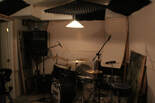 The Goal going in was to Sample the entire Drum kit. Bring your choice pieces, mic it, warm up. Record each drum in every possible way. 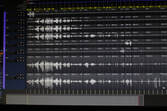 So we Warmed up, finished sampling the kit into this session here. Luckily, the setup was quick and efficient. Tracking went smoothly. we captured each Sample and then about a half-dozen loops. Next up is getting the loops Mixed, I won't get too deep into the weeds on the technical side. Light EQ mostly. Some Minor Edits. Later, the samples will be Exported as individual files and arranged by velocity. Don't complain, Seriously, Stop complainingPlease don't complain that your gear isn't good enough, or that you're not good enough. Seriously, Stop complaining. Recording is one part artform and one part physics. You as an artist should be learning to trust yourself. That's right, not every project is going to be perfect. Get over it, It doesn't actually matter as much as you might think. Here are 3 considerations to make your recording sound 'good'1: quality on the input This comes down to your performance, and your overall sound. It's like this, if you practice your song. You will get better results. It also ties into the quality of your gear. Is your guitar set up properly? does it stay in tune? do you need fresh strings? do you have clean pre-amps for your microphones? 2: Put things in balance When you have your tracks, lets say you took 3 guitar takes, put them together in a way that blends smoothly. Lets say you've added some soft-synths? and some midi drums. Do they blend? did you put on your engineering hat and use your mixing tricks to make space so that everything sounds good? 3 Finishing touches. Adding embelleshments, automation, Final adjustments for dynamics, keeping the song interesting from start to finish. how you get there doesn't matterHere at Gene Media, we don't care how you get there. We recognize that everyone is unique in their own approach, or as a smart author once said, "we each have our own game." The whole point is putting trust in yourself, trust in your ears, trust in your process, and trust your ability.
A song can be four chords. That's not wrong, but if your chord progression is simple, then consider the Principles of contrast to make your song POP. where do you put contrast in your song?Where do you put contrast in your song? What are your song's elements?
Song Structure Have you thought about how your song is laid out while the concept is fresh? I recommend as good practice to outline a few basic song-structures for the style of music you write. it could look like one of these examples:
or
Helps with efficiency to simply put things into a place where you dont have to worry about structure. Why use this approach? because it takes the struggle out of putting the songs together because that part is already done. Just build the pieces to fit and stick them in. Songwriting En-masse, just remember your Contrast considerations. Smooth transitionshow can you switch it up without being abrasive? So now that we're fitting the pieces in, I guess you'll need pieces first. This is where creativity and imagination come into play. During your daily (and i hope it's daily) practice, noodle around until you come up with something. Some folks like to play from scales or books for inspiration. others simply jam. The point is to come up with something that sounds good to you. Remember it's music. There isn't a one-size-fits-all approach to this stuff. how can you switch it up without being abrasive Abrupt transitions are not always bad. To me it depends on the characteristics of the genre, some being friendlier to rule-breaking than others.
Practice vlog. I tend to not talk much. That's part of this whole experiment. Get over any nervousness around playing music on camera. At the end of the day, it's not so bad. In fact, It's a lot like those first couple times you go out to play your songs in public. It's a little nerve-wracking at first but eventually, you start to warm up to the feeling of putting yourself out there... Have courage to take the action and learn from your mistakes. Here's my Intentional vocal practice. Question. What did you notice about what and how I'm improvising? if you were practicing music in this way, what would you do differently? Comments here (or on youtube)
Thanks for being awesome. Introduction to the subjective nature of music methodologyI've said it before and I'll say it again. Music is an artform, Audio is a science. The two joined together create the magic that is a great record. Certain things are subjective, others are concrete. There are principles behind audio production that can help you to get a better sound on your recording, but the application of these principles will almost never be a 'one size fits all' approach. project goals - the ideal soundSo your song is structured out. You've got your go-to tone. that's great. You've imagined your ideal sound and that's probably the hardest part. Now we get into the tricky bit... Laying it down in such a way that the end product matches your initial vision. I remember my first dozens of songs. I would set out with the intention to make a Punk song or a Dub song, but somehow it didn't turn out the way I planned it to. Why? was it lack of experience? Was it lack of the correct tools or my inability to use them? I may never know. Sometimes the unexpected can be a real treat, sometimes it's just a disappointment. a myriad of toolsIn our modern digital age, we've got a nearly unlimited variety of tools to choose from. For example, what kind of microphone is best for a male vocal? answer, It depends on the singer, his pitch, his Timbre (the tone of voice,) the positioning, and the room.
how do I get a thick-heavy tone from my guitar? it depends on a lot of things, what kind of pickups are in your guitar? what amplifier are you using? settings on a pedal-board? are you using a DI (direct signal?) are you prepared to re-amp your guitar later? do you have the ability to add thickening in the mix? The same applies to EQ settings. A lot of time, there will be a range that you can approximate where an instrument falls, assuming you're mixing a rock band. Is it the same for classical music? jazz? the answer is it depends. 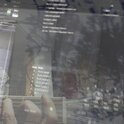 Starting with the easy thing or the hard thing? that's up to you to decide. I'd recommend knocking back the easiest tasks first, the ones that would take the least time to accomplish. The more difficult tasks might require some incubation time, new skillsets, or a network of friends to help you out. Do the workavoiding procrastination
Something is better than nothing It doesn't have to be perfect You'll get better with time See a door, open a door, you don't have to step through it right away. Check to see what's on the other side. If you see potential there, then start moving. the decision to take action - It starts with a choice. Remember the words we use in our own minds carry weight. The language we use in our internal dialoge affects our reality. No seriously. No more of this Someday i hope to ____. A better line of conversation is I am ____. These are called affirmations, and next time you catch yourself using language like hope, want, trying to, etc. Catch yourself and think about it for a moment. Are you trying to do something? or are you Doing it? going through the motions - Consistency of effort once you understand what you want, the next step is to follow through. How many artists I know don't do this. I was guilty of it myself. It's called Failure to launch syndrome. I get it, it's easier to just push your ambition aside and play some video games. Next thing you know it's 10 years later, and have to bust-ass to make up for lost time. If you're not doing something every day, start with 1 thing. If you're already doing something every-day, then start doing 3 things every day. It'll take dedication and preparation, but you can do it. Start Now. when should you listen in context? Do you solo out tracks and mix them by themselves? What does it mean to keep things in context? The most important tools are your ears and your mind. Use them, trust them. If it sounds good it sounds good. but remember the context. From your sound in the space it's in, to the interaction of frequencies in your mix. listening in context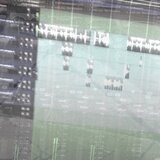 Reference mixes can help you understand how your track is sounding compared to other songs. If you're listening to a playlist, and one song is drastically quieter than the one before it, thats no good. Reference mixes can help you avoid that. using ducking. if you hear a displeasing sound in your guitar track, a useful trick (if it is supported by your hardware) is called ducking (or listening in place.) This is basically just turning down everything, and keeping the track that has your attention at the forefront. imagine it like a lens through which you can still seee what's happening in the rest of the song as you're doing surgery on that guitar track. the mix-engineer's skill-setTrust your ears If it feels right, it probably is. I've seen many an indie go way overboard with mixing each individual track to perfection, only to to turn off solo and have to do it again. They end up to their necks in audio problems they barely understand. striking a balance between tracks vs tracks, & tracks just sounding good on their own. Solo out that track and it sounds fine alone but in the mix it sounds wrong. What is actually happening and why? Which interaction of instruments/tracks is causing that? Use solo to find that. Remember that sounds interact with other sounds. Just because one track is a vocal and another is a guitar doesn't mean frequencies are not competing for space. The sound is combined and played back through your sound system, and if you're not mixing in headphones, they're interacting with your room too. why it mattersSaving time - repeated steps - do-overs So how to conclude this article, and mix it right. If you're having to solo out a track, tweak it to get it sounding perfect, and then start over again to get it sounding good in context, You're doing it twice. You don't have to. Don't worry, these skills are like learning a new instrument. they come with time and practice. Luckily we live in an age where people are sharing their years of skills and experience for free on the internet. Need some tips? Let me google that for you...
insert wall of text hereI guess the first question would be how do you want to capture your ideas? If you have a decent laptop or computer you can use a DAW with an audio interface. *Cubase/nuendo, protools, logic, studio one, reaper, are a few examples. For basic tracking they all do pretty much the same thing. The workflow and the price-point is the main consideration while you're just starting out. For Audio interfaces, there are quite a few out there. It depends on your budget. like, the Behringer U-phoria series is probably the cheapest, and the Apollo ones are on the top-end. I'd recommend going onto amazon to browse and read reviews if that's the way you want to go. Just remember, you usually get what you pay for, so if you can afford to spend the $$$, then get the best you can. Or you could use a built-in recorder that captures to SD card (like someone mentioned the zoom R16) I had one of those for years, they're mobile and useful, but the preamps aren't the greatest. but it gets the job done. other considerations, will be how many channels you need. will you want to use mics (if so do you have a nice quiet room?), or a direct-in signal? I'm guessing you could probably get by with a 2 channel (for most purposes) or an 8 channel if you need to track drums, or want to go all out with lots of mics. 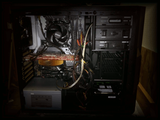 Sample rate and Bit Depth are another consideration. this will look like (sample rate 44,100 48,000 96,000) (bit depth 16, 24, or 32, bit) Just use the highest you can get away with. but the higher you go, the more cpu power you'll need, and the more storage space your sessions will take up 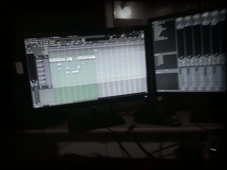 Gain staging - once you're setting up to record, set your input gain to the highest you can get without clipping. I'd recommend doing a google search for 'signal to noise ratios audio' or 'gain staging audio' to figure that part out. basically, you want the 'hottest signal you can get without clipping or introducing too much noise' As far as sending your tracks off for mixing. Your engineer will probably ask you to consolidate your tracks. which basically means you export your tracks individually, each beginning at 0:00. This allows for the engineer to easily align them in the new mix session. a quick and dirty guide to 'getting the bass right'My biggest piece of advice is to use what you have, trust your ears. To get really great at mixing takes time and practice. Focus on geting the best sound you can from the tools and knowledge you've got. Trust that as you do more and more, your skillset will improve, and so will your mixes Low End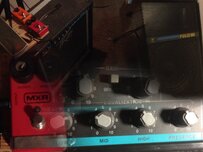 let's say you're looking for a deep-warm tone. It sounds great on a good sound-system, but it doesn't show up on small speakers. what do you do?What do you do is not a question that can be directly answered yet; that is, unless you already know what your options are, and in that case, you probably already have your problem solved. what are you trying to achieve?let's start here instead. Okay, so lets say your genre is indie rock. It's a song that's driven by the guitars and the vocals. 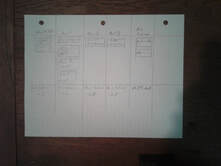 great, now which instruments live in the low-end. commonly this will be drums and bass (kick, toms, Bassline, the bottom of the guitar, and the deepest part of the vocal. The bass doesn't cut through? ask yourself which instrument and why? what is happening in the low-end?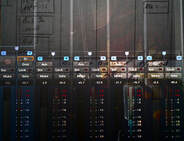 The kick drum sounds good, the guitar/vocal sounds fine. the bassline doesn't cut. It doesn't always need to be front and center, It can act as the glue to hold the song together. When you move away from your good sound-system to your laptop/earbuds/car stereo/mobile. it seems to disappear completely. how can you approach thisA few areas to consider.
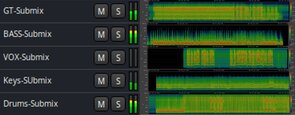 Imagine your low-end in 3 bands. you've got sub-frequencies, Low-frequencies, and precieved low-frequencies (low-mids and above) Check for trouble areas in the context of these three 'bands' EQ is your most powerful tool! try to find the frequency range you're looking for using your solo function to listen for which tracks might be competing for 'space', for example, the bass if it's most present at 80Hz, but the guitar is 'masking' the bass up between 160- 300Hz. You might also have low-frequency energy competing in tracks where it has no business being. here, a hi-pass filter would be your friend. For example, The bass is warm and present between 60-160hz, but adds nothing above that. because it's being covered up by another instrument, A small set of laptop/phone speakers may lack clarity at frequencies below (approximately) 200-300Hz. They have the most presence between 1-5kHz. if you can let the bass through within these ranges (again these numbers are guestimates, every mix is different) you can achieve a more consistant tone across sound-systems.
|
Gene Media ProductionsCody Gene: Record Producer Music Methodology & Creative Lifestyle
#
All
Archives
April 2024
|
Categories
|
AboutGene Media Creative Studio is the Production Facility of Indie-Rock producer and songwriter Cody Gene.
|

Gene Media Creative Studio is located in British Columbia, Canada and creative Cody's creative space. here he explores ideas, creative vision, and technical aspects of independent music production + artist development.
|
Contact |

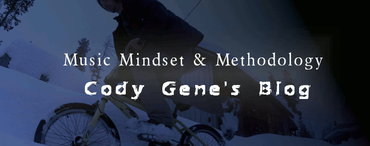
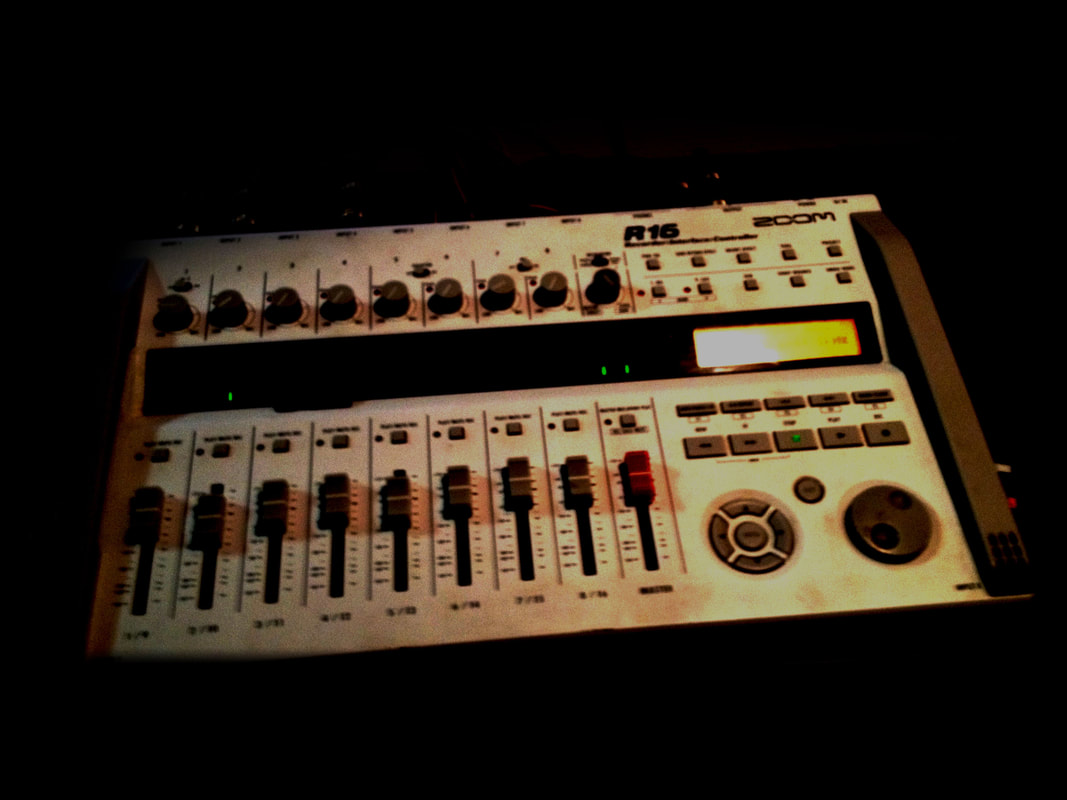
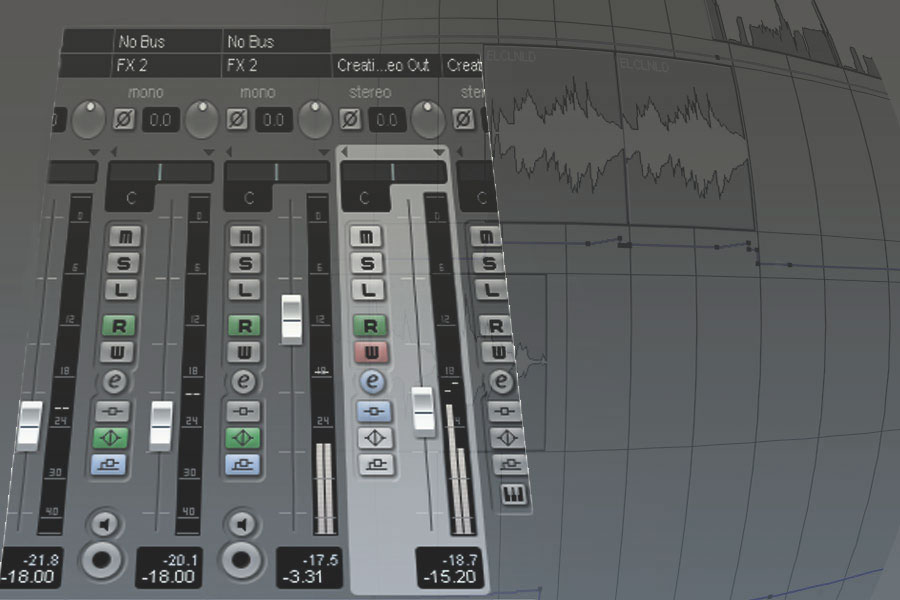
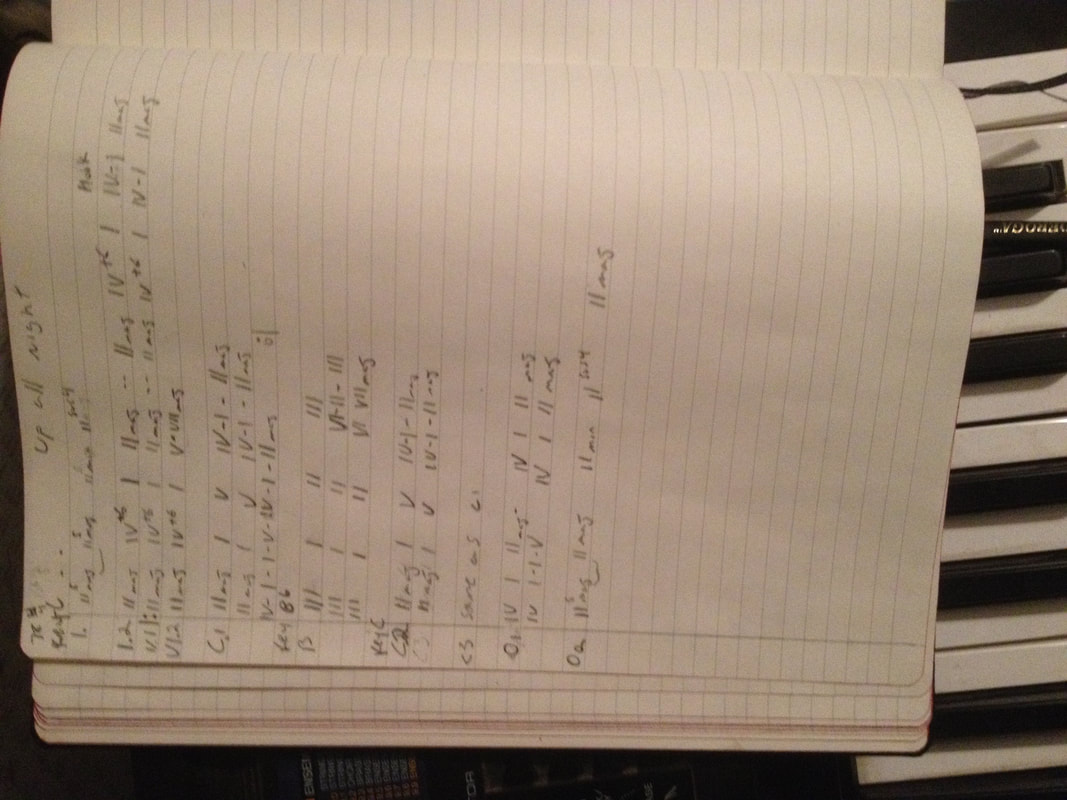
 RSS Feed
RSS Feed